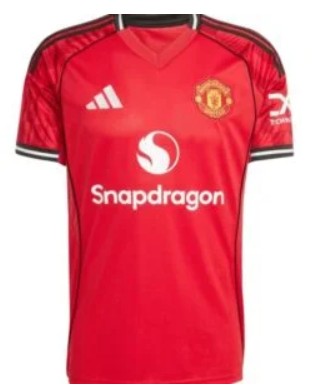What is ROI in Sports Betting?
Return on Investment (ROI) is the most fundamental metric for measuring betting profitability. It shows the percentage return you’re getting on every dollar wagered, regardless of your stake size or betting frequency. Unlike simple profit/loss tracking, ROI provides a standardized way to compare performance across different bettors, bankrolls, and time periods.The beauty of ROI lies in its simplicity and universality. A bettor with a $100 bankroll achieving 15% ROI is performing just as well as someone with a $10,000 bankroll achieving the same percentage. This democratization of performance measurement is why professional betting syndicates and tipsters always highlight their ROI figures.Calculating ROI: The Essential Formula
The ROI formula for sports betting is straightforward:ROI = (Net Profit / Total Amount Wagered) × 100Let’s break this down with a practical example. If you’ve placed $5,000 worth of bets over a month and ended with a net profit of $750, your ROI would be:
- ROI = ($750 / $5,000) × 100
- ROI = 0.15 × 100
- ROI = 15%
Understanding Yield: The Professional’s Metric
While ROI and Yield are often used interchangeably in sports betting, purists maintain a subtle distinction. Yield traditionally refers to the profit percentage based on total turnover, making it identical to ROI in most betting contexts. However, in professional circles, Yield often implies a longer-term view and is the preferred metric for serious bettors tracking performance over hundreds or thousands of bets.The key advantage of Yield is its stability over large sample sizes. While your ROI might fluctuate wildly over 50 bets, your Yield over 1,000 bets provides a much clearer picture of your true edge. This is why professional tipsters often require a minimum of 500 bets before claiming a reliable Yield figure.Real-World Yield Benchmarks
Understanding what constitutes good Yield is crucial for setting realistic expectations:| Yield Range | Performance Level | Sustainability |
|---|---|---|
| -5% to 0% | Losing bettor | Unsustainable |
| 0% to 3% | Break-even to slight profit | Marginal |
| 3% to 8% | Profitable amateur | Good with proper bankroll |
| 8% to 15% | Professional level | Excellent long-term |
| Above 15% | Elite or unsustainable | Verify sample size |
ROI vs Yield: Which Metric Should You Use?
The choice between ROI and Yield often depends on your betting style and goals. Bankroll management strategies typically favor ROI for short-term analysis and Yield for long-term performance evaluation. Professional bettors often track both metrics to gain different perspectives on their performance.For casual bettors placing fewer than 100 bets monthly, ROI provides more immediate feedback and helps identify profitable strategies quickly. However, serious bettors aiming for consistent profits should prioritize Yield, as it better reflects sustainable edge over bookmakers.Transform your betting approach today! Use Talacote’s advanced calculator to automatically track both ROI and Yield across all your bets, with detailed analytics to improve your strategy.Advanced Metrics: Beyond Basic ROI and Yield
Professional bettors don’t stop at simple ROI and Yield calculations. They employ sophisticated metrics that provide deeper insights into performance consistency and risk management. Understanding these advanced concepts separates profitable professionals from lucky amateurs.Sharpe Ratio for Sports Betting
Borrowed from financial markets, the Sharpe Ratio measures risk-adjusted returns. In betting terms, it shows whether your profits come from skill or simply taking bigger risks. A high ROI with massive variance might indicate lucky big wins rather than consistent edge.The betting Sharpe Ratio formula:Sharpe Ratio = (Average Return – Risk-Free Rate) / Standard Deviation of ReturnsFor sports betting, we typically use 0% as the risk-free rate, simplifying the calculation. A Sharpe Ratio above 1.0 is good, above 2.0 is excellent, and above 3.0 is exceptional.
Maximum Drawdown Analysis
Even profitable bettors experience losing streaks. Maximum drawdown measures the largest peak-to-trough decline in your bankroll. This metric is crucial for surviving variance and bad runs.A bettor with 10% Yield but 60% maximum drawdown needs a massive bankroll to avoid bankruptcy. Conversely, someone with 5% Yield and 20% maximum drawdown might be the safer long-term investment. Professional syndicates often cap acceptable drawdown at 30% regardless of potential returns.Common Mistakes When Calculating ROI and Yield
Even experienced bettors make critical errors when tracking their performance metrics. These mistakes can lead to overconfidence, poor bankroll decisions, and ultimately, betting failure. Let’s examine the most common pitfalls and how to avoid them.1. Ignoring the Time Factor
ROI without context is meaningless. A 50% ROI sounds impressive until you realize it took three years to achieve. Always annualize your returns for meaningful comparisons. If your 15% ROI took six months, your annualized ROI is approximately 30% – truly exceptional if sustainable.2. Cherry-Picking Winning Periods
Human psychology leads us to emphasize wins and minimize losses. Many bettors calculate ROI only during winning streaks, conveniently “resetting” after bad runs. True professionals track every single bet from day one, accepting that losses are part of the long-term equation.3. Excluding Opportunity Costs
Your betting bankroll could be invested elsewhere. If you’re achieving 5% annual ROI while the stock market returns 10%, you’re actually underperforming. Factor in what economists call “opportunity cost” when evaluating whether your betting is truly profitable.4. Miscalculating Stakes in Multiple Bets
When placing parlays and multiple bets, many bettors incorrectly calculate their total wagered amount. Each leg of a parlay should be counted in your turnover calculation, not just the initial stake. This error can dramatically inflate perceived ROI.Tools and Software for Tracking Performance
Manual tracking in spreadsheets works for casual bettors, but serious players need professional tools. Modern betting trackers automatically calculate ROI, Yield, and advanced metrics while providing visualizations that reveal patterns human analysis might miss.Essential Features in Betting Trackers
- Automatic odds conversion: Seamlessly handle decimal, fractional, and American odds
- Multi-bookmaker support: Track bets across different platforms
- Tag system: Categorize bets by sport, strategy, or tipster
- Time-based analysis: View performance by day, week, month, or year
- Export capabilities: Generate reports for tax purposes or investor presentations
Setting Realistic ROI and Yield Targets
Unrealistic expectations kill more betting careers than bad picks. Social media is flooded with “gurus” claiming 40% monthly ROI, but mathematics and market efficiency make such returns impossible long-term. Let’s establish evidence-based targets for different betting approaches.Sport-Specific Yield Expectations
Different sports offer varying levels of profitability due to market liquidity and information efficiency:| Sport/Market | Realistic Yield Range | Difficulty Level |
|---|---|---|
| Football (Soccer) | 2-6% | High competition |
| American Sports | 3-8% | Data-driven edge possible |
| Cricket/IPL | 4-10% | Regional knowledge advantage |
| Live Betting | 5-12% | Requires dedication |
| Arbitrage | 10-30% | Capital intensive |
The Psychology of Performance Tracking
Numbers don’t lie, but our interpretation of them often does. Understanding the psychological aspects of performance tracking is crucial for maintaining objectivity and making rational decisions. Even professional bettors fall victim to cognitive biases that distort their perception of success.Survivorship Bias in Betting Forums
When browsing betting communities, you’ll encounter numerous success stories boasting impressive ROI figures. What you don’t see are the thousands who quit after losing. This survivorship bias creates unrealistic expectations and pressures newcomers to take excessive risks chasing impossible returns.The Plateau Effect
Many bettors experience initial success with 20-30% ROI, only to see performance decline as sample size increases. This isn’t necessarily skill degradation – it’s regression to the mean. Your true edge emerges only after thousands of bets, typically stabilizing at much lower but sustainable levels.Professional betting syndicates account for this by using conservative projections. If historical data shows 12% Yield, they budget for 8% going forward. This buffer protects against overconfidence and ensures survival during inevitable downswings.From Amateur to Professional: The ROI Journey
Transitioning from recreational betting to professional play requires more than just improving your ROI. It demands a complete mindset shift, treating betting as a business rather than entertainment. Let’s explore the typical progression and milestones that mark this journey.Stage 1: The Learning Phase (-10% to 0% ROI)
Every professional started here. You’re paying “tuition” to the market while learning basics like reading odds and understanding probability. Losses are investments in education. Focus on minimizing losses rather than chasing profits.Stage 2: Breaking Even (0% to 3% ROI)
Congratulations – you’re no longer a net donor to bookmakers! This stage involves refining strategies and developing discipline. Many plateaus here, satisfied with free entertainment. Professionals push through by specializing and increasing volume.Stage 3: Consistent Profitability (3% to 8% ROI)
You’ve found your edge. Whether through statistical models or specialized knowledge, you’re beating the market consistently. The challenge now is scaling without degrading performance – many edges disappear with increased stakes.Stage 4: Professional Operations (8%+ ROI)
At this level, betting is your business. You’re managing multiple accounts, possibly running a syndicate, and definitely using Kelly Criterion for stake sizing. The focus shifts from finding bets to managing operations and avoiding account limitations.Protecting Your Edge: Why High ROI Attracts Problems
Success in betting creates its own challenges. Bookmakers aren’t charities – they actively identify and restrict profitable players. Understanding how to protect your edge is as important as developing it initially. Many bettors achieve professional-level ROI only to find themselves unable to place bets.The Bookmaker’s Perspective
Modern bookmakers use sophisticated player profiling. They track not just your profits but your betting patterns. Consistently beating closing lines, focusing on weak markets, or exhibiting arbitrage patterns triggers account reviews. A 15% ROI bettor placing random accumulators might survive longer than a 5% ROI sharp hitting soft lines.Strategies for Account Longevity
- Bet round numbers: Avoid stakes like $47.83 that scream arbitrage
- Mix in recreational bets: Occasional accumulators or casino play
- Avoid maximum stakes: Taking full limits identifies you as sharp
- Use betting exchanges: They welcome winners since they profit from commission
- Spread action: Multiple accounts across different bookmakers







